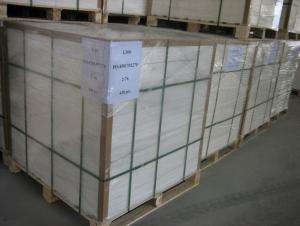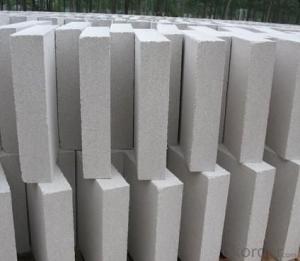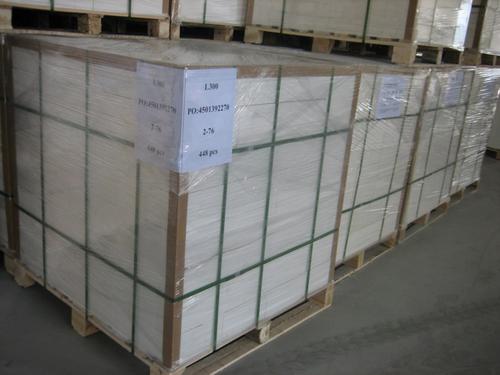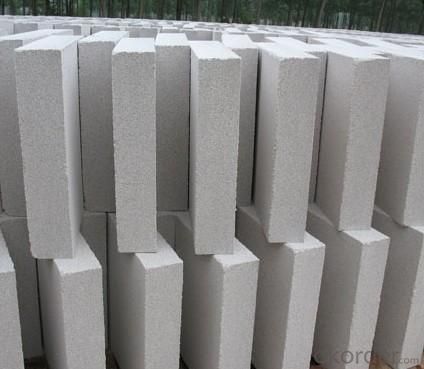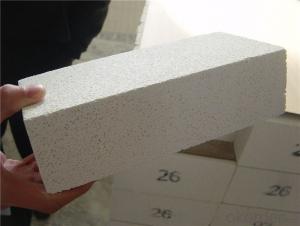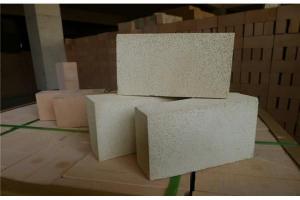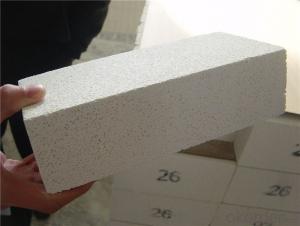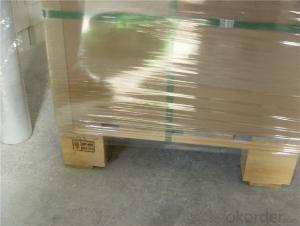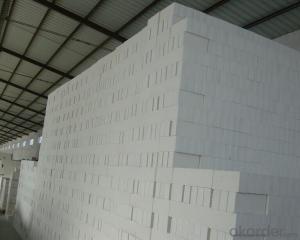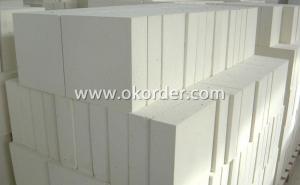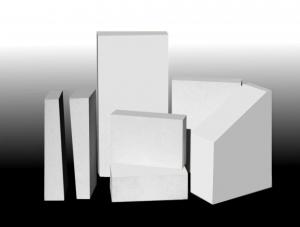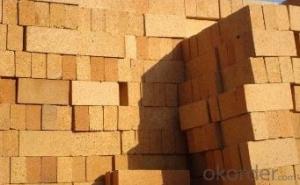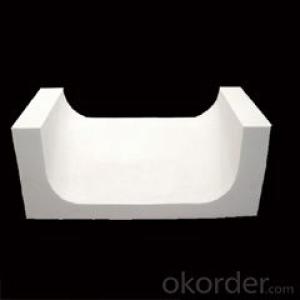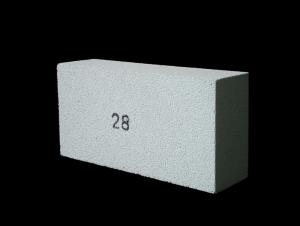GJM Series Insulating Fire Bricks
- Loading Port:
- Shanghai
- Payment Terms:
- TT OR LC
- Min Order Qty:
- 20 m.t.
- Supply Capability:
- 100000 m.t./month
OKorder Service Pledge
OKorder Financial Service
You Might Also Like
General Information
CMAX insulating firebricks are classified under temperature between 1300℃ to 1700℃, manufactured from high purity alumina clay.
1. Lower content of iron, alkaline and impurities, good high temperature properties.
2. Homogeneous structure, light weight, energy saving because lower heat storage in the furnace during cooling cycles.
3. High strength, good thermal shock resistance under high temperature.
4. Precise sizes due to grinding and shaping after sintering, which meets the requirement of construction.
5. Max service temp: Up to 1730C (3160F)
Feature
Light weight and low thermal conductivity
Low heat storage
Low iron and impurities
High thermal shock resistance
Application
CMAX insulating firebricks can be used as a hot face lining directly exposed to the heat or as a backup insulation layer in iron and steel mills, non-ferrous foundries, petrochemical, ceramic, glass.
ITEM | GJM30 | GJM28 | GJM26 | GJM23 |
Classification Temperature, ℉/℃ | 3000/1650 | 2800/1540 | 2600/1430 | 2300/1260 |
Bulk Density,g/cm³ | ≤1.0 | ≤0.9 | ≤0.8 | ≥0.5 |
Reheating Linear Change, % | ≤0.9 (1550℃,12 h) | ≤0.8 (1510℃,12 h) | ≤0.7 (1410℃,12 h) | ≤0.5 (1230℃,12 h) |
Al2O3 Content, % | ≥75 | ≥65 | ≥55 | ≥45 |
Fe2O3 Content, % | ≤0.5 | ≤0.6 | ≤0.7 | ≤1.0 |
Thermal Conductivity: | ||||
800℃, w/m.k | ≤0.39 | ≤0.37 | ≤0.35 | ≤0.18 |
1000℃, w/m.k | ≤0.43 | ≤0.41 | ≤0.39 | ≤0.20 |
1200℃, w/m.k | ≤0.48 | ≤0.46 | ≤0.43 | --- |
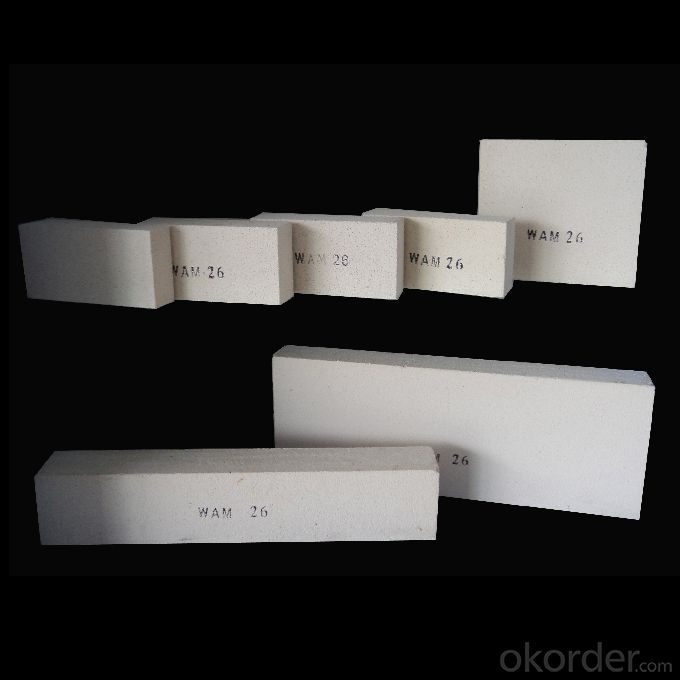
- Q: What industries commonly use insulating fire bricks?
- Insulating fire bricks are commonly used in various industries where high temperature insulation is required. Some of the industries that commonly use insulating fire bricks include: 1. Steel industry: Insulating fire bricks are used to line the furnaces, kilns, and other high-temperature equipment in steel manufacturing plants. They provide excellent insulation, reducing heat loss and improving energy efficiency. 2. Glass industry: In glass manufacturing facilities, insulating fire bricks are used to line the furnaces and ovens where the glass is melted and molded. These bricks help maintain high temperatures while minimizing heat loss, ensuring efficient and consistent production. 3. Ceramic industry: Insulating fire bricks are used in ceramic kilns and pottery ovens, providing thermal insulation to maintain the desired temperature for clay and ceramic products. They help conserve energy and optimize firing processes. 4. Cement industry: Cement kilns require high-temperature insulation to efficiently produce cement. Insulating fire bricks are used to line the kilns, reducing heat loss and improving thermal efficiency. 5. Foundry industry: Insulating fire bricks are used in foundries to line the melting furnaces and ovens used for metal casting. They help retain heat, ensuring consistent and efficient melting of metals. 6. Power generation industry: Insulating fire bricks are used in boilers, furnaces, and incinerators in power plants. These bricks provide thermal insulation, preventing heat loss and improving the overall efficiency of power generation processes. 7. Petrochemical industry: In refineries and chemical processing plants, insulating fire bricks are used to line equipment such as reactors, furnaces, and ovens. They provide insulation to withstand high temperatures and harsh chemical environments. 8. Pharmaceutical industry: Insulating fire bricks are used in pharmaceutical manufacturing facilities to line the ovens and dryers used for various processes. These bricks ensure precise temperature control and energy efficiency. Overall, insulating fire bricks find applications in industries where high-temperature insulation is crucial for efficient and cost-effective operations.
- Q: Are insulating fire bricks resistant to moisture penetration?
- Yes, insulating fire bricks are resistant to moisture penetration.
- Q: Can insulating fire bricks be used for insulation in flues?
- Insulating fire bricks are specifically designed for high-temperature applications and are commonly used in furnaces, kilns, and other industrial settings. While they are excellent for insulating heat and preventing heat loss in these environments, they are not recommended for use in flues. Flues are subjected to extreme temperatures, corrosive gases, and the potential for soot and creosote buildup. Insulating fire bricks are not designed to withstand these conditions and may deteriorate or crack over time when exposed to the acidic and corrosive gases produced by combustion. For insulation in flues, it is best to use materials that are specifically made for this purpose, such as refractory cement or ceramic fiber insulation. These materials are more resistant to the harsh conditions found in flues and are better suited to provide effective insulation while ensuring the safety and durability of the flue system.
- Q: Can insulating fire bricks be used in the construction of reheat furnaces?
- Yes, insulating fire bricks can be used in the construction of reheat furnaces. These bricks are designed to withstand high temperatures and provide excellent insulation, making them ideal for use in furnaces. Insulating fire bricks have a low thermal conductivity, which helps to reduce heat loss and improve energy efficiency in the furnace. Additionally, they have high resistance to thermal shock, allowing them to withstand rapid temperature changes that occur during the reheat process. Overall, insulating fire bricks are a suitable choice for the construction of reheat furnaces, as they contribute to better heat retention and energy savings.
- Q: Can insulating fire bricks be used in wood-fired kilns?
- Indeed, wood-fired kilns can utilize insulating fire bricks. These bricks are specifically engineered to endure elevated temperatures and offer exceptional insulation, rendering them an optimal choice for wood-fired kilns. They effectively retain and evenly distribute heat throughout the kiln, guaranteeing efficient and uniform wood firing. Furthermore, their lightweight nature aids in the construction and upkeep of the kiln. Ultimately, the utilization of insulating fire bricks in wood-fired kilns enhances their overall performance and efficiency.
- Q: Are insulating fire bricks resistant to erosion?
- Insulating fire bricks, in general, exhibit resistance to erosion. They consist of lightweight materials like alumina, silica, or a combination thereof. These materials possess remarkable resistance to erosion caused by elevated temperatures, chemical reactions, and physical wear. They are engineered to endure extreme heat and harsh circumstances, rendering them highly resistant to erosion. Furthermore, insulating fire bricks demonstrate low thermal conductivity, preventing easy absorption or transfer of heat and thereby affording additional protection against erosion. Nevertheless, it is worth noting that the level of erosion resistance may differ depending on the precise composition and quality of the insulating fire bricks.
- Q: How are insulating fire bricks installed?
- Insulating fire bricks are typically installed by stacking them in a pattern, using a special refractory mortar or adhesive to secure them together. The bricks are carefully aligned and leveled to create a solid and heat-resistant barrier. It is important to follow the manufacturer's instructions and ensure proper curing time for the mortar before exposing the bricks to high temperatures.
- Q: Are insulating fire bricks resistant to salt attack?
- Insulating fire bricks are not typically resistant to salt attack. Salt attack refers to the corrosion and degradation of materials when exposed to salt or saltwater. While insulating fire bricks are designed to have excellent thermal insulation properties, they are not specifically formulated to withstand the corrosive effects of salt. Salt attack can lead to the breakdown of the bricks' structure, reducing their performance and durability over time. If these bricks are regularly exposed to salt or saltwater, it is likely that they will experience accelerated degradation and may not provide long-term reliability in such environments. To ensure resistance to salt attack, it is recommended to use refractory materials specifically designed for this purpose, such as salt-resistant fire bricks or refractories with higher alumina content. These materials have been developed to withstand the corrosive effects of salt and are more suitable for applications where exposure to salt or saltwater is expected.
- Q: Can insulating fire bricks be used in ladle covers?
- Insulating fire bricks can indeed be used in ladle covers. These bricks are specially designed to have low thermal conductivity, which means they can effectively insulate and retain heat. Ladle covers are used in foundries and other high-temperature industries to keep molten metal or other materials hot and prevent heat loss. By using insulating fire bricks in ladle covers, the heat is better retained, resulting in improved energy efficiency and reduced fuel consumption. Additionally, these bricks have high refractory properties, allowing them to withstand the extreme temperatures and thermal shock that ladles are subjected to. Overall, insulating fire bricks are an excellent choice for ladle covers, as they help to maintain temperature stability and conserve heat.
- Q: Can insulating fire bricks be used in blast furnaces?
- Yes, insulating fire bricks can be used in blast furnaces. Insulating fire bricks are designed to withstand high temperatures and provide excellent thermal insulation. Blast furnaces operate at extremely high temperatures, typically around 1500°C (2732°F), and require materials that can withstand these harsh conditions. Insulating fire bricks are made from lightweight materials such as ceramic fibers, which have low thermal conductivity and can effectively retain heat. This makes them ideal for lining the walls and roofs of blast furnaces, as they help to conserve energy, reduce heat loss, and improve overall furnace efficiency. Additionally, insulating fire bricks can also help to protect the structural integrity of the blast furnace by reducing thermal stress and preventing excessive heat transfer to the surrounding environment. Overall, the use of insulating fire bricks in blast furnaces can contribute to improved performance, energy savings, and extended furnace life.
Send your message to us
GJM Series Insulating Fire Bricks
- Loading Port:
- Shanghai
- Payment Terms:
- TT OR LC
- Min Order Qty:
- 20 m.t.
- Supply Capability:
- 100000 m.t./month
OKorder Service Pledge
OKorder Financial Service
Similar products
Hot products
Hot Searches
Related keywords
